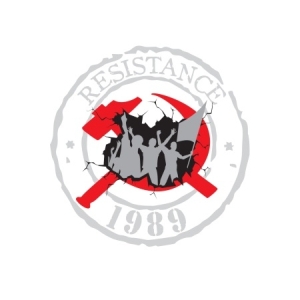
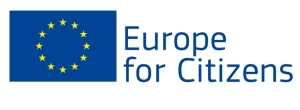
The project „1989: Fall of Communism in Eastern Europe, Development of the strategic game for the young Europeans” was funded with the support of the European Union under the Programme "Europe for Citizens"
Strand 1 – " European Remembrance "
3 events have been carried out within this project:
Event 1
Participation: The event involved 78 citizens, including 46 participants from the city of Kraków, Poland 14 participants from the city of Košice, Slovakia , 12 participants from the city of Deta, Romania, 6 participants from the city of Berlin, Germany.
Location / Dates: The event took place in Kraków (Poland), from 18/04/ 2015 to 20/04/ 2015
Title of the event: Polish movement towards freedom. The fall of communism. From the Round Table to the parliamentary election in June 1989.
Short description:
The aim of the event was: historical seminar concerning the history of Poland in 1989, film projections, creative board game workshops, photographic & design workshop, live action roleplaying, public presentation of the project results. The focus on the event was a presentation of the events of the year 1989 in Poland: the Round Table Talks and elections in June (democratic elections after the fall of communism). In addition, participants took part in the presentation concerning the history of the fall of the Berlin Wall.
April 18, 2015
This day was devoted to the seminar. The purpose of the meeting was to get acquainted with the history of Poland in the 80s, in particular the events of 1989 Round Table Talks and the parliamentary election in June 1989. These events are landmarks in the history of Poland and they caused the collapse of communism. Introduction to the subject of the seminar was educational film „History Lesson on screen” (written and directed by Zajączkowski). In this projection participants had seen the most important events of 1989 in Poland.
Than it was started the panel discussion with invited experts. The first presentation was made by dr Cecylia Kuta from IPN (The Institute of National Remembrance in Poland). In her speech she outlined the genesis of communism in Poland after Second World War, she spoke about the creation of Solidarity, martial law and she described events from 1989 in Poland the Round Table and the parliamentary election in June. Piotr Kapusta from The Historical Museum of the City of Kraków introduced presentation about Nowa Huta – the city of communism. In his presentation he pointed out the reasons for the construction of Nowa Huta district of Krakow nowadays, but in the 50s the city founded by communists as a separate town. Next, Mikołaj Maśluk – Meller (the coordinator of German partner in project ) made a short presentation about situation in the East Germany in 1989 and the reasons of the fall of the Berlin Wall.
After a break lunch it was begun the panel of invited guests witnesses the events of 1989 in Kraków.
The first guest was Mr Edward E. Nowak economic expert, politician, in the years 19691985 he was employed in Nowa Huta Lenin Steelworks. He talked about his memories from the 80s, Solidarity trade union (which he was a member), strikes, protests. He showed the circumstances of the Round Table meeting, (in which he attended) and in the parliamentary elections in June in 1989.
Next guest was Grzegorz Surdy, active supporter of the strike in Nowa Huta Lenin Steelworks and demonstrations against the imposition of martial law. In his speech he indicated the most important moments in his life: establishment of movement Freedom and Peace, the International Conference on Human Rights in 1988 in Mistrzejowice, demonstrations and protests in 1989 in Krakow.
Then it was time for questions to Polish witnesses. Participants asked about their feelings concerning, among 25th anniversary of the Polish freedom, regretting or not their decision during the 80s.
In the end of the day it was planned screening of the movie “Beats of freedom – Zew wolności " directed and written by Gnoiński and Slota. The documentary offered a social context to the music that was made in Poland throughout the later years of communism which provided the soundtrack to Solidarność and the fall of the Iron Curtain.
April 19, 2015
The second day had a practical character. After a photographic & design workshops introduction made by Krzysztof Biliński photograph, the participants took part in different activities. The first group went on a trip to the historical district to Nowa Huta, where participants had possibility to do practical photographic workshops and visit Nowa Huta with guides from The Historical Museum of the City of Kraków. Ms. Sylwia Pisarska and Mr. Jacek Malec told participants some anecdotes about events in Nowa Huta. It was also an opportunity to photograph objects. The best photos was used in a board game the product of the project.
The itinerary included: Kombinat (Steel Works), Central Square (Plac Centralny), Roses Avenue (Aleja Róż) where monument of Lenin stood, Park Town Hall and unrealized project Town Hall, the example of residential architecture estate os. Urocze, a monument of the Defenders of the Cross (where the first inhabitants of rebellion against the communist regime in Nowa Huta in 27-28.04.1960), People’s Theatre and the Church of the Ark of the Lord (the first new church in Nowa Huta).
The second group took part in the board game creating workshop. Participants with the team of Kuźnia Gier created the concept of the board game. The aim of the workshop was to collect ideas from the project participants for board game mechanical solutions (associated with rules of a game) and theme (historical and cultural elements in the game).Participants started the workshop with a short introduction about the history of modern board games and their characteristics.
Results of the workshop:
- Preparing list the issues that should be included in the game
- Preparing list of places that might be found on the board
- Preparing the quiz questions to be used in the game concerning the subject of the event
After lunch break there was exchange of activity groups. The first group had a workshop with representatives of the Kuźnia Gier, while the second group went on a trip to Nowa Huta.
The last point of second day was the game LARP (Live Action Roleplaying). Dawid Hallmann led it for participats. The subject of this LARP was The Round Table and its political consequences. The aim of LARP was to show especially foreign participants how the negotiations could look like during the Round Table meeting. It wasn’t strictly historical play of the Round Table, but it showed the mechanism of reaching an agreement between the communists and the dissidents in Poland. Participants were asked to play the roles of the main characters at the
Round Table. The draw decided who had taken the role of communist, divided into hardcommunists (aim: communist domination in all areas) and liberalcommunists (aim: communist domination in the media and business). The opposite side was opposition (aim: to take control over a government and to have majority in parliament), there were also the communist agents in opposition (aim: to be in government, media and business), hard anticommunist opposition (aim: radical decommunisation); and the ordinary citizens. The “communists” and “the opposition groups” determined the strategy to hold or gain power in the state. The most important tool in the hands of opposition was a strike, protest (it would be endorsed by all members of the opposition) or attempt a settlement with the communists at the Round Table. During two rounds of difficult negotiations by Round Table, participants agreed on the content of the agreement and came to the holding of free elections. The new elected government has taken some urgent laws to save the country and in particular the law on decommunisation (total offset communists from holding public office). The fate of this bill hung in the balance until the last minute, and only one vote in government decided to hold a total decommunisation. There were also big role for agents who were in the government opposition.
April 20, 2015
The third day of the event was a public presentation and summary of the event results. First, participants met together on workshop in order to prepare a presentation. Then, participants uttered this presentation for open audience – most of them were the students from the local high schools. Aurea Libertas Institute – project coordinator presented the founding of the project and the activities, which were planned for the
project participants during this event. Than participants presented their thoughts about the event, the workshops and their participation in them. Team of Kuźnia Gier also showed its summary from workshop boarding game.
International project partners (Azimut, O.Z (Slovakia) and "Timis – Torontal” Intercommunity Development Association (Romania)) had also short presentations: they invited potential participants to came to their events in Kosice ( 18-20 July) and in Deta/Timisoara (26-28 September). They revealed the beauty of their cities which potential participants will host. In the end all participants received the diplomas.
Event 2
Participation: The event involved 50 citizens, including 16 participants from the city of Košice, Slovakia; 15 participants from the city of Kraków, Poland , 11 participants from the city of Deta, Romania , 8 participants from the city of Berlin, Germany.
Location / Dates: The event took place in Košice ( Slovakia ), from 18/07/2015 to 20/07/2015
Title of the event: “V” for "Velvet Revolution 1989. A peaceful way to freedom in Czechoslovakia.
Short description:
The aim of the event was: historical seminar concerning the history of Czechoslovakia in 1989, film projections, creative board game workshops, photographic & design workshop, live action roleplaying, public presentation of the project results. The focus on the event was presentation about events of 1989 in Czechoslovakia – the Velvet Revolution.
July 18, 2015
This day was devoted to the historical seminar, meetings with the witnesses of 1989 events and movie projections. Introduction to the subjects of the seminar was presented by Mgr. Renata Bzdilova, Phd. from Department of Political Science, of Pavol Jozef Safarik University of Kosice. During an hour long speech, she outlined the genesis of communism in Czechoslovakia after Second World War, with detailed focus on revolutionary year of 1989 in Czechoslovakia. Part of the presentation was a short entertaining quiz about basic phrases such as…"What does
word revolution really means?" , etc. After Renata Bzdilova’s presentation, three short movies were played about democratization processes in Czechoslovakia during the 1989 Velvet Revolution.
Next part of meeting was panel discussion with invited guests witnesses of the Velvet Revolution in Kosice: Peter Neuwirth and Daniel Liska. They were leaders of Kosice’s opposition group and they were founders of Civic Form and Public Against Violence organization in Kosice. In the very subjective presentations, participants heard about absurdity of communistic regime and hard time of students and public involved in opposition organizations in 1989.
The presentation was followed by a short discussion. Participants asked witnesses about their feelings during the Velvet Revolution.
In end of the day, participants met in cultural centre Tabacka Kulturfabrik in order to spend nice evening. Organizers of the event – Azimut O.Z prepared short introduction about the program of the event and Kosice city.
July 19, 2015
The second day had a practical character.
After a photographic & graphic design workshop led by a volunteer David Hanko, where participants learned a lot of practical tips on how to photograph different objects, participants took part in different activities.
One group went to continue photographic workshop to the Košice city center, with a local guide Ms. Adriana Hižňanová. She shared with participants interesting anecdotes about Košice and its citizens, young people had become familiar with events, changes and history of the city, mainly during communistic era and revolution in 1989. There was also an opportunity to take photographs. The best photos was used in a board game — the final product of the project.
The itinerary included: Technical University, Peace Marathon Square, The craft street , St. Elisabeth Cathedral, Liberators Square, previous base of Civic Forum and Public Against Violence organization, and the most important place of all: Scientist Library with its balcony and memorial plate of Velvet revolution.
The second group took part in the board game creating workshop. Participants with the team of Kuźnia Gier (board editor) worked on creating the concept of the board game. The aim of the workshop was to collect ideas from the project participants for board game theme (historical and cultural elements in the game, and famous persons), mechanical solutions and theme examples of questions and answers for game cards.
Participants started the workshop with a short introduction about the history of modern board games and their characteristics, and afterwards the young people were asked to list the issues that should be included in the game.
Recurred dispute was whether players should incorporate the roles of the opposition, or whether they should compete with each other as representatives of the opposition and the communist regime. Based also on the preferences from the previous event in Kraków , participants agreed on the form, where all players represents opposition and, are fighting against the game itself, which represents communist regime.
The next step was to engage the participants in designing places that might be found on the board, for example university, hospital, main square, prison , etc. The workshops were completed with quiz questions.
In summary, the initial idea for board game created in workshop back in Krakow was confirmed in this second event as well. It was established that the board game will be:
- Game for 14 people
- Content of the board game: 1 board, 110 cards, 10 wooden markers, tokens and 2 die.
- Game will take place in unspecified communist city, where players from all countries (Poland, Germany, Slovakia and Romania) involved in the project will be able to find the main characteristic buildings from communist times
- The winner is the person who contributes the most to the achievement of game´s objective.
The aim of the game is both amusement and education. The game will also provide valuable information related to culture by the content of cards, pictures, questions.
After a lunch break there was exchange of activity groups. The first group had a workshop with representatives of the Kuźnia Gier, while the second group went on a trip to Kosice center.
The last element of second day was the game LARP (Live Action Roleplaying) led by Rafał Halski and Kamil Kardel. The theme of the LARP was the effort of Czechoslovakian opposition groups to recall communistic government. Members of opposition were systematically attacked by police, and under the control of spies and provocateurs. Participants were asked to play the roles of the characters, which were present in the reality of the Velvet revolution. The draw decided who had taken the role of communists, police officers, racketeer, students, workers/citizens, communist agents in opposition, journalists and members of the opposition organizations. The communists and the opposition groups determined the strategy to hold or gain power in the state. During three rounds of underground activities, negotiations and persuasion, the opposition had finally joined in, and participants agreed on the content of the agreement and came to the holding of free elections.
July 20, 2015
The third day of the event was a public presentation and summary of project results.
First, participants met together on workshop in order to prepare a presentation. Then, young people altered this presentation for the public audience (most of them local citizens from the city of Kosice), and via internet by online broadcasting. Aurea Libertas Institute (project coordinator) presented the findings of the project, what activities
Azimut O.Z (organizer Slovak event) had planned for participants during this event and participants shared their thoughts. Team of Kuźnia Gier (board game editor) also showed its summary from workshop boarding game. International project partners, that is Aurea Libertas Institute Poland, "Timis – Torontal” Intercommunity Development Association Romania, and representative of "Ariadne Kulturnetzwerk e.V”. – Germany also had the short presentations. Romanian partner also revealed the beauty of their city Timisoara which we will host the last event of the project during 26-28 September.
In the end all participants received diplomas.
Event 3
Participation: The event involved 97 citizens, including 65 participants from the city of Deta, Romania , 20 participants from the city of Kraków, Poland , 10 participants from the city of Kosice, Slovakia, 2 participants from the city of Budapest, Hungary.
Location / Dates: The event took place in Deta and Timisoara ( Romania ), from 26/09/ 2015 to 28/09/ 2015
Title of the event: Revolutions in the Autumn of Nations revolution in Romania and Hungary in 1989.
Short description:
The aim of the event was: historical seminar concerning the history of Romania in 1989, film projections, creative board game workshops, photographic & design workshop, live action roleplaying, public presentation of the project results. The focus on the event was presentation about events of 1989 in Romania: bloody revolution in December in 1989 and fall of regime of Ceausescu. In addition, participants learned about the history of Hungary in 1989.
September, 26, 2015
This day was devoted to the seminar. The purpose of the meeting was to get acquainted with the history of the revolution in Romania, especially in Timisoara in 1989, the history of revolution in December days in 1989 (in particular the events in days 16th-25th of December –from the revolution in Timisoara and bloody protest to an execution of Nicolae Ceaușescu and his wife Elena). These events are landmarks in the history and they caused the collapse of communism in Romania. The main point of this day was meeting with the witnesses of the events of 1989 in Timisoara and Deta Balint Costel and Gheorghe Cristianand with Executive Director of Timisoara Revolution Memorial Association – Gino Rado. Invited guests spoke about their experiences during the revolutionary days in Timisoara and Deta in 1989. They said many details from these event. They also shared their thoughts after years about the fall of communism in their country. After short break participants watched documental movie „Noi nu murim” (written and directed by Timisoara Revolution Memorial Association). In the 40minute projection participants saw the most important events of 1989 in Romania.
Then it was time to debate. Participants had many questions (which they occurred after seeing the movie). Gino Rado, Balint Costel, Gheorghe Cristian and Gheorge Duta responded them and explained in detail the political situation in 1989 (before and after the events of December). The questions was concerned for example: the role of the church in the revolution, motives and why so quickly were executed Ceaușescu and his wife, the leaders of the revolution and riots of "terrorists" after the revolution.
Complemented by knowledge of the revolution in 1989 was a photo exhibition, which the participants could watch during the seminar.
The last official meeting point was the speech of invited guest from Hungary – Balazs Farkas (from Budapest). After a day full of new knowledge, the participants from Poland, Slovakia and Hungary came back to Timisoara. Unofficial point of the event had become an evening tour of Timisoara. This city charmed foreign participants.
September, 27, 2015
The first part of the second day of the event was dedicated to photographic & graphic workshop, connected with visiting the places associated with the revolution in 1989. Participants visited Memorial Museum of the Revolution in Timisoara. The guide Mocioarca Simona told young people about each exhibition dedicated to the commemoration of the revolution in Timisoara in 1989. Participants saw, among others, an exhibition devoted to Ceaușescu and his wife, exhibition prepared by Polish Institute of National Remembrance and the Romanian
Museum about the Romanian Revolution.
Then participants went to the city to see and depict the monuments of the revolution in 1989. For example: there was a monument Invingatorul
(sculpture of a hero of the revolution, which had claimed victory loss of leg and arm (shown as big sacrifice were people who were willing to die in the name of victory of the revolution).
The last point of the trip was a visit to Timisoara Historical Center.
After a lunch break participants immediately started the board game workshop. A brief introduction about the formation of a board gameit
was only the beginning for further workshops. Experts from Kuźnia Gier (board game editor) had a surprise for the participants a
prototype board game (created by the ideas at the international event in Kraków and Kosice).
These objectives of workshop were:
- Preparing quiz questions for the board game connected with the subject of the Romanian event
- Testing the game and submit comments
In the evening participants took part in LARP (Live Action Roleplaying). Theme of this game was Romanian Revolution in 1989. Participants draw roles, among then there were: president Ceausescu, his wife Elena, military officials, opposition, Securitate, state authorities, representatives of the society. During the game participants who played the roles of the representatives of society began to unite and prepare the protests. President Ceausescu tried to calm down them, but the voice of society was becoming clearer and louder. Finally, the president Ceausescu was deposed and new government introduced democratic changes. The aim of the game was not strictly the course was to recreate the events of history in 1989, but to show the mechanism overthrow of the communist regime in Romania.
September, 28, 2015
The third day of the event was a public presentation and summary of project results. First, participants met together on workshop in order to prepare a public presentation. Then, young people uttered this presentation for open audience most of them were the students form the invited schools (Saint Nicholas High School in Deta, Scoala Uviteg, Scoala Generala Giera). Organizers and participants from all the international
partners (“Timis – Torontal” Intercommunity Development Association, Azimut, O.Z., Aurea Libertas Institute had also short presentations presented the founding of our project, what activities had been planned for project participants during this event, they shared their thoughts. Team of Kuźnia Gier (board game editor) also showed its summary from workshop boarding game. In the end all participants received diplomas.
Koordinátor projektu:
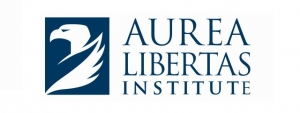
Partner projektu:

Partner projektu:
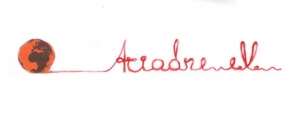
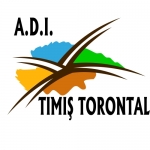

Projekt "1989: Pád komunizmu vo východnej Európe, rozvoj strategická hra pre mladých Európanov" je realizovaný v rámci programu Európa pre občanov, Časť 1 "európska pamäť", spolufinancovaný Európskou úniou.